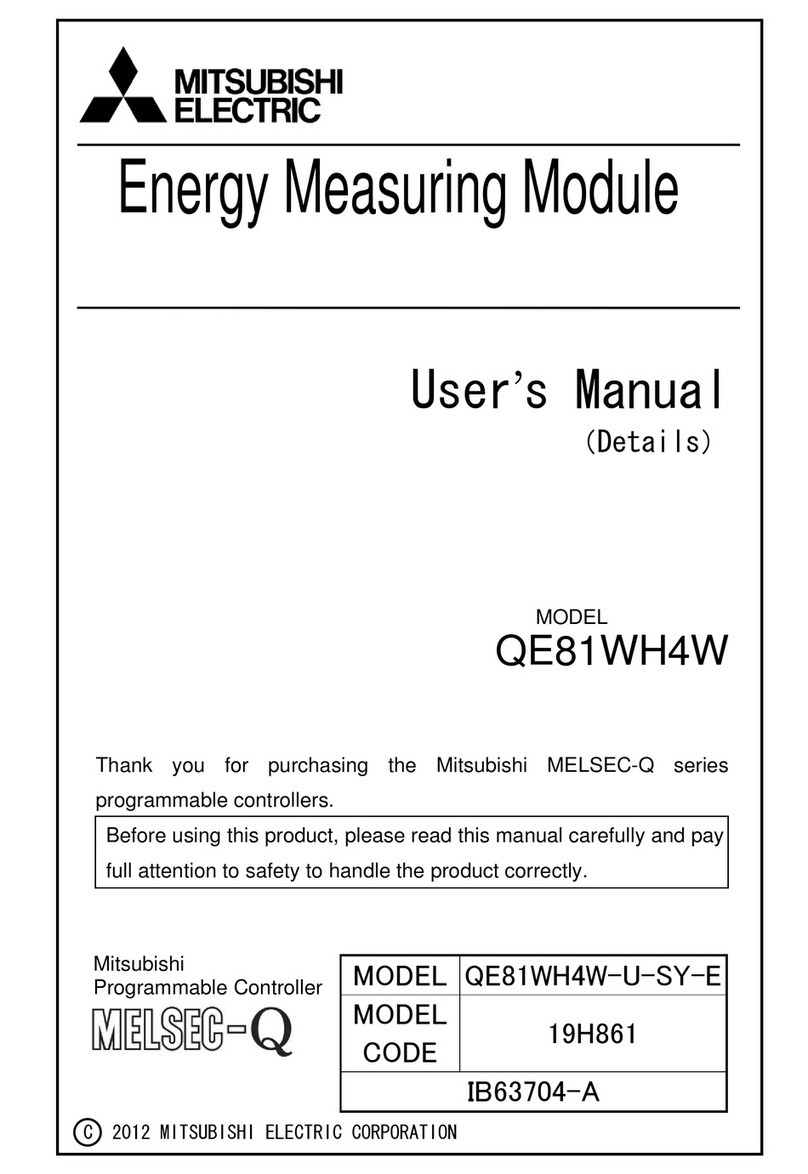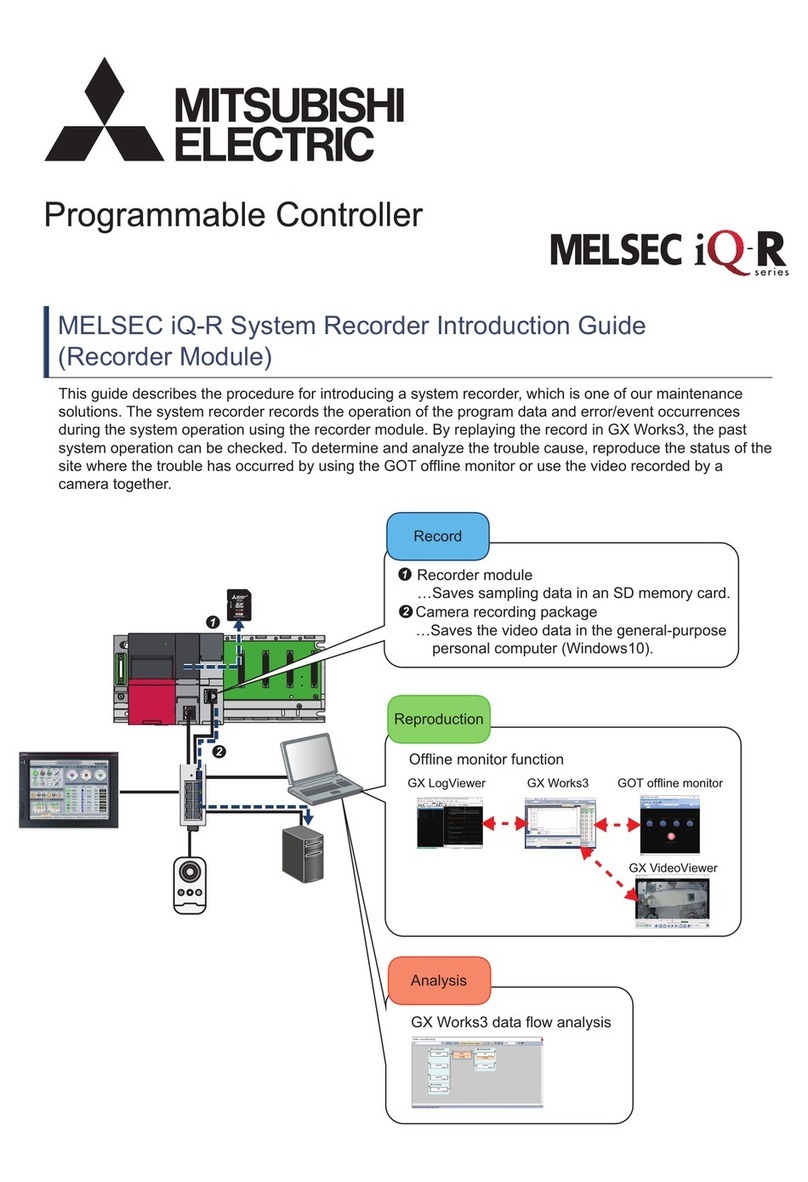
(2/32)
3. Safety Precautions
3.1 Working environment and working conditions
Do not use the unit in any of the following places. Doing so may cause malfunction or reduction in service life.
⋅Place where the daily mean temperature
exceeds 35°C
⋅Place with much vibration or impact
⋅Place exposed to direct sunlight
⋅Place with strong electromagnetic field
or much foreign noise
⋅Place where the ambient temperature exceeds the working temperature range
(−5°C to 55°C)
⋅Place where the humidity exceeds the humidity range (30% to 80%RH) or
condensation occurs
⋅Place with much dust, corrosive gas, salt or oily smoke
⋅Place where the unit may be exposed to rain or drops of water
⋅Place where metallic particles or inductive substances are dispersed
3.2 Preparation before using
zEnsure that the working environment and working conditions in the installation location conform to the specifications.
zIt is necessary to set the CC-Link station number and transmission rate of this unit prior to use.
Set the phase and wire system, primary voltage and primary current.
For setting, it is necessary to use the optional display unit (EMU2-D65) or logging display unit (EMU2-D65-M). Order one of these units
when purchasing the measuring unit.
3.3 Installation and connection
Before installing and connecting the unit, read the instruction manual without fail. For safety, the unit shall be installed and connected by
experts in electrical work.
Caution
<Cautions for work>
zPerform wiring work in a dead state. Do not wire the unit in a live state. Doing so can cause electric shock, ground fault, unit failure and
fire.
zWhen threading and wiring, take utmost care that cuttings and wire pieces do not enter the unit.
zConnect the wires carefully checking the wiring diagram. Improper wiring can cause unit failure, fire and electric shock.
zTo prevent entry of noise, do not lay the transmission signal line and input/output signal line close to any power line or high-voltage line,
and or do not bind these lines.
zKeep the dust sheets applied on the unit while wiring work. After the completion of wiring work, remove the sheets.
zWhen opening and closing the terminal cover, take care not to apply undue force to the cover.
<Connection of terminal block>
zUse electric wire of an appropriate size (1.25 mm2). Use of wire of an improper size can cause fire due to heat generation.
zUse crimp-type terminals appropriate to the electric wire size (bare round terminals for M3.5 having an outer diameter of 7.2 mm or less).
Use of improper terminals can cause unit malfunction, failure, burnout or fire due to wire breaking and contact failure.
zTighten the screws to the specified torque (0.49 to 0.78 N⋅m). Excessive tightening can damage the terminals and screws.
zAfter tightening, be sure to check that all screws have been tightened. Failure to tighten any screw can cause unit malfunction, fire or
electric shock.
<Connection with current sensor>
zUse this product in combination with the dedicated current sensor.
zEMU-CT50, EMU-CT100, EMU-CT250, EMU-CT400 and EMU-CT600 are designed for low-voltage circuits (maximum voltage of
460 V). These models are not applicable to high-voltage circuits. When using EMU2-CT5 (-4W), pass the secondary side (5A)
of the current transformer through the sensor. The sensor can be connected directly to circuits of up to 200 V (maximum
voltage of 260 V). Connecting it to a high-voltage circuit by mistake may cause burnout of the unit or fire, resulting in a
hazardous situation.
zThe current sensor has polarity (directionality). When installing it, check the polarity.
zWhen the unit is used for a single-phase 3-wire circuit or a 3-phase 3-wire circuit, two current sensors are necessary.
zOne dedicated current sensor cable can connect two current sensors.
zConnect the unit and current sensor(s) with the dedicated cable.
<Wiring of CC-Link communication line and input signal line>
zWhen the transmission signal line and input signal line are laid in
parallel with a power line or a high-voltage line, keep the distance
shown in the right table between them.
zUse the specified cable for CC-Link connection. Dedicated CC-Link cable and dedicated CC-Link high-performance cable cannot be
used simultaneously. If the cables are used simultaneously, correct data transmission cannot be assured.
zThe terminal resistance shows different resistance value depending on the type of the dedicated cable.
zConnect the shielded wire of CC-Link connection cable to “SLD,” and ground “FG” according to Class D grounding (Class 3 grounding).
“SLD” and “FG” are connected in the unit.
zThe CC-Link transmission line is a small signal circuit. Lay the line at a distance of 10 cm or more from any heavy current circuit. If the
line is laid in parallel with such a circuit over a long distance, lay the line 30 cm or more away from the circuit. When using, ground the
FG terminal.
<Connection of FG terminal>
zFor practical use, ground the FG terminal.
zDo not connect the FG terminal when performing insulation resistance test or withstand voltage test.
zA high-voltage protective element is fitted between MA and FG and between MB and FG. If high voltage is applied for withstand voltage
test, the protective elements function to short-circuit MA and FG, and MB and FG.
Condition Distance
Low-voltage power line less than 600 V
Other high-voltage power line 30 cm or more
60 cm or more













































